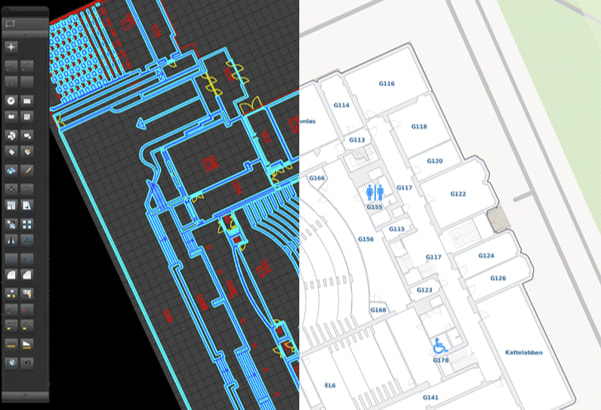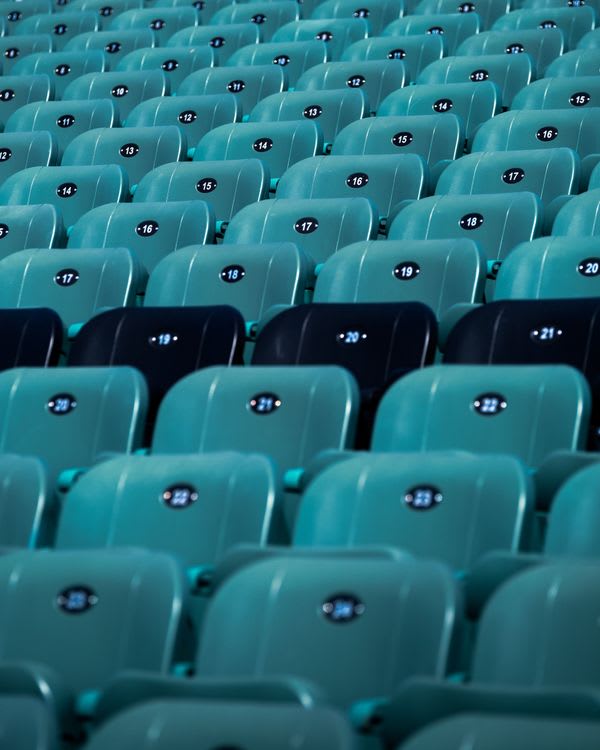Why Indoor Mapping is the Solution to Wayfinding in Train Stations (or Any Transportation Hub)
Wayfinding is a crucial part of our life. It determines how individuals are able to navigate the world around them, and impacts far more than you may guess. Millions of people move through transportation hubs like train stations, airports, or bus stops every single day- and not always with ease. Ineffective wayfinding can create barriers to the effective usage of a transportation hub, and can negatively affect efficiency, speed, and customer experience.
Indoor mapping is one of the most practical and beneficial wayfinding solutions for passenger-friendly rail stations. Indoor mapping uses immersive technology to improve accessibility, simplify operations, ensure smooth passenger flow, and provide an enhanced travel experience. In this article, we will talk more about train station wayfinding solutions and how you can implement them.
Indoor Mapping Solutions
There are various challenges within the railway industry. From protecting passengers to improving efficiencies, improvements in tech and cost savings are continually being evaluated. Additionally, railway transport providers have a legal obligation to provide equal opportunity to all people who wish to utilize their services.
Indoor navigation and wayfinding are highly beneficial for transit hubs like train stations. It can be intimidating to navigate through a crowded or unknown area, all with the added pressure of missing a scheduled departure. For people with any sort of accessibility needs, these challenges are magnified.
Ease of Travel
That’s where indoor mapping comes in. Indoor mapping helps travelers to get acquainted with their surroundings through features like zooming, panning out, or rotating their interactive indoor map. Indoor mapping assists people who are traveling with locating terminals, identifying services, and seeing route schedules. These step by step services are accessible through both mobile and web devices, as well as digital directory displays.
Many railway stations tend to face issues with wayfinding, including clarity and ease of use. In peak travel times, passengers who stop at wayfinding signs can cause significant congestion. This can result in passenger satisfaction being negatively affected for all travelers.
One of the best features of indoor mapping is that facility owners can edit maps in real-time. This means that directions will always be up to date, and travelers can move seamlessly through a brand new environment.
Effective indoor mapping solutions decrease the amount of time that passengers need to spend wayfinding to be reduced. It also helps move stationary or slower-moving passengers away from high-flow areas by eliminating their need to stop for navigation instructions.
Improvements in the ease of passenger wayfinding result in a more tolerable travel experience and simpler decision-making process for passengers prioritizing rail/public transportation over personal transport methodologies.
Accessibility
Railway transport providers have a legal obligation to provide equal opportunity to all people who wish to utilize their services. Therefore, railways must identify the population groups which experience the greatest disadvantage, and work to find a solution. Railways must identify feasible and cost effective solutions for people with wayfinding impairments. Indoor mapping technologies are one great stride in the accessibility efforts of transit hubs.
Passengers with cognitive, sensory, and mobility impairments often experience difficulties when moving through transport hubs. This is often due to a lack of assistive technologies and suitable aids. Unfortunately, this leads to the rail transport system being underutilized by the disabled community.
Indoor mapping technology provides solutions many disabilities, including but not limited to visual impairments. Imagine being in a train station and not knowing how to get to your gate, find a restroom, or locate a ticket counter. GoodMaps Explore helps people who are visually impaired navigate safely and efficiently.
Increased Revenue Driving Opportunities
Digital mapping not only assists in ease of travel and accessibility, but it has the ability to drive and increase spending by increasing awareness of restaurants and shops for travelers to visit. This not only brings revenue driving opportunities on to a passenger’s radar, but can even notify them when they of things like nearby ticket counters or vending machines. Passengers can also choose to be notified of ongoing promotions. Each of these small engagements can drive revenue through indoor positioning.
Minimal Infrastructure
Prior to GoodMaps, indoor positioning required the installation and maintenance of hardware like Bluetooth beacons or Ultra-wide band beacons. This is not only costly, but requires labor for installation and maintenance. The GoodMaps approach only requires a single beacon at building entrances.
Improving the Passenger Experience Through Wayfinding Technology
Effective wayfinding is represented by the ease of navigation between a station’s facilities and the patrons using them. This is often dependent on the structure and layout of the station, as well as users’ sensory input in relation to them. Successful wayfinding technology addresses passengers’ visual, auditory, and tactile sensory inputs.
It is important to improve the satisfaction of all passengers from the time they first enter the train station until they board. This can be achieved by moving traffic flow away from congested areas of the concourse and platform, increasing and improving signage, and incorporating assistive technology to help passengers, whether disabled or not, understand better what is happening around them. With these things in mind, train stations can increase the level of service capabilities available for passengers, resulting in ease of travel and vast improvement in passenger satisfaction.
To learn more about how GoodMaps can increase accessibility and improve passenger experience, visit us at goodmaps.com.


